4.9 Generating Potable Water
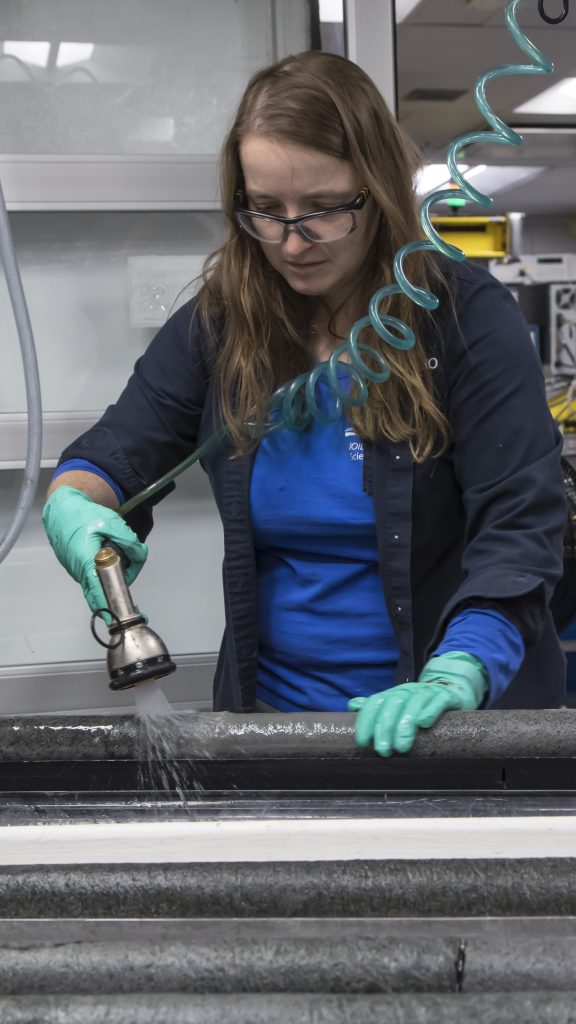
Water, Water Everywhere! How was it Made Potable?
Imagine that you are on a desert island. To survive, you need water that’s drinkable, or “potable.”
JOIDES Resolution, on two-month long expeditions in the middle of the sea was on an island of sorts, surrounded by water, but full of salts. Everyone showered, had daily laundry service, was served up to six meals per day and had an endless supply of drinking water. How did this happen?
All of the freshwater onboard was made from seawater by three water makers. Collectively, they produced 50 tons of water per day by distillation, a process that has been in use for thousands of years.
How does distillation remove salts? Seawater is boiled, then the steam is cooled until it condenses to fresh water. This works because when seawater evaporates, dissolved salts are too heavy to turn into vapor under normal conditions. So, they are left behind. Each of JOIDES Resolution’s water makers contained a desalinator, the system that removes the salts.
Exercise: Desalinator Video
(Video Credit: Tessa Peixoto, IODP EXP 402, CC BY-NC-ND)
After viewing this video about desalination, answer the following questions:
a) What was the ship’s heat source for boiling water?
b) Why was the desalinated water “hardened” before the crew drank it?
An Energy Efficient System
With an inexhaustible supply of seawater and the transfer of heat from one water batch to the next, the distillation process of JOIDES Resolution’s water makers used very little energy.
Here are the main reasons:
- In two of the water makers, each called an Alfa Laval System, the seawater jackets around the engines cooled them off. This newly heated seawater became the heat source for the boiling step.
- Thanks to vacuum conditions inside the Alfa Laval evaporator tanks, boiling required even less heat than usual. In a vacuum, the atmospheric pressure is lower, so water molecules need less energy (temperature) to escape into the vapor phase, leading to a lower boiling point. This means that seawater does not need to be heated to 100°C (212°F) to boil; it can evaporate at a much lower temperature, typically around 40–60°C (104–140°F).
- The third water maker, the Aqua Chem System used electric heaters for the initial boiling, but was self-sustained. In the process of condensing the steam into fresh water, the surrounding, cool circulated seawater heated up and became an energy source for boiling the next batch of seawater.
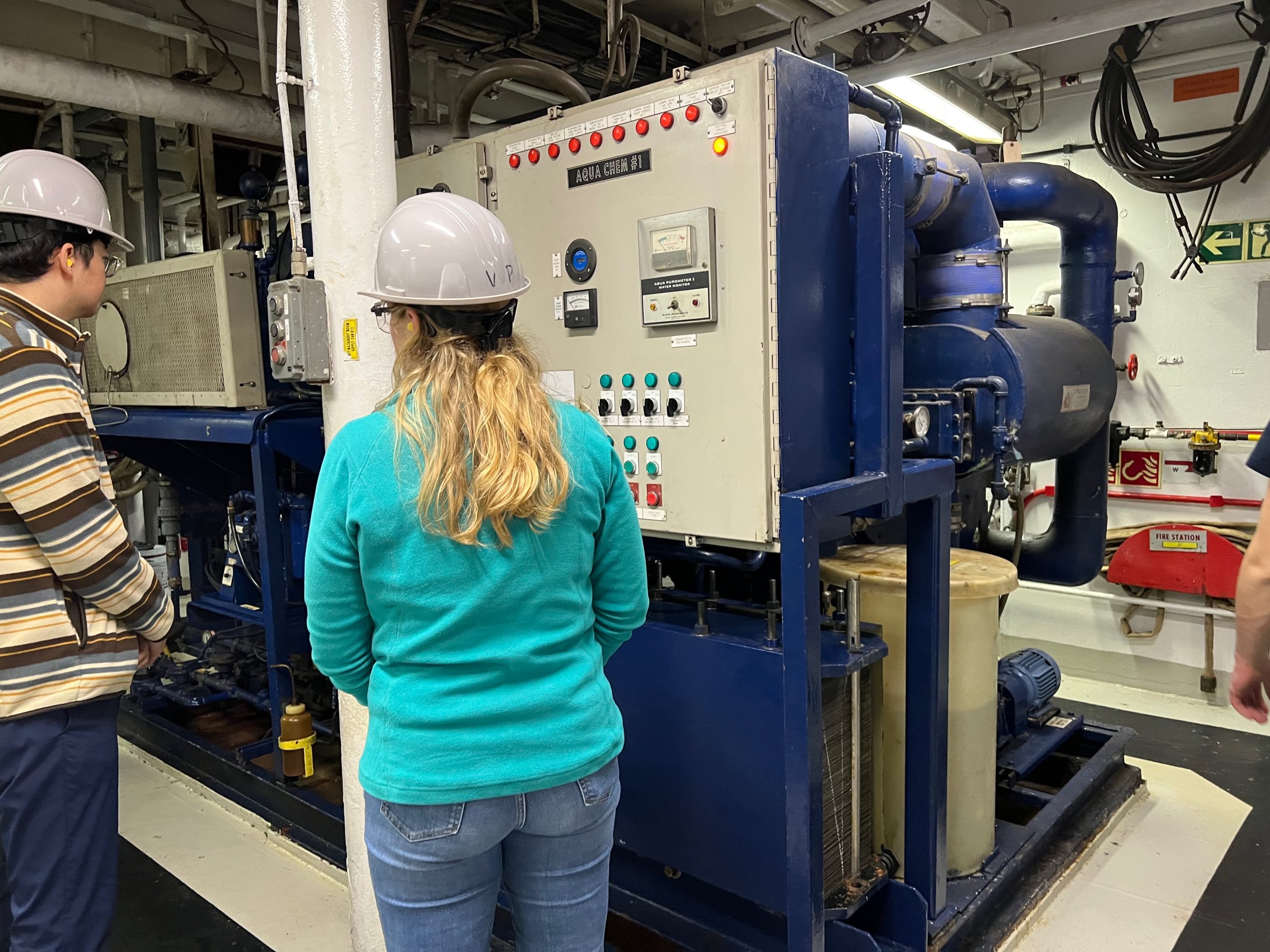
- By using a compressor, less cooling was needed in the condensation step. In the Aqua Chem system, the early-formed steam was fed into a mechanical compressor which raised the pressure, a condition that favors a change of steam to the more dense, liquid water. As the seawater evaporated, the remaining concentrated saltwater (brine) was separated and discharged back into the sea
Exercise: How Do You Boil Water Without Heat?
The ship’s water maker contained a vacuum, which means that much less energy was needed to boil the water. This video explores the conditions for boiling water and how a vacuum helps. Check it out and respond to the following questions:
a) Explain this statement: “Boiling has nothing to do with temperature.”
b) What role does pressure play in boiling water?
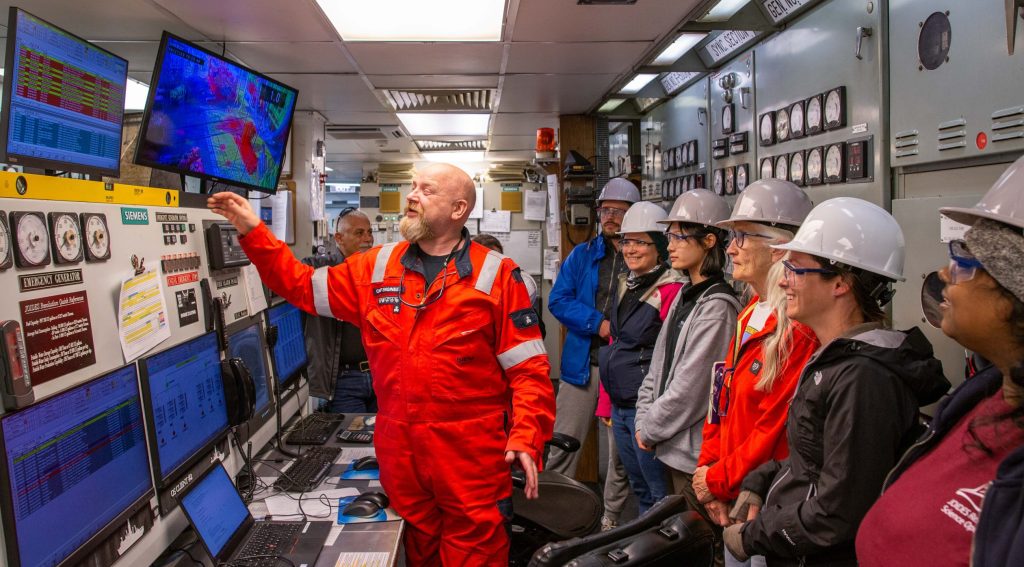
Was the Water Then Safe to Drink?
While distilled water is 99.5% pure, it is almost too pure for use in machinery or for human consumption and can leech metal ions from wherever it flows. On the ship, a mineralizer unit, also called a re-hardener added minerals back into the water in order to make it healthier to drink and to run through ship equipment.
Potable water was stored in three disinfected storage tanks, isolated from all other tanks and treated with bromine for sterilization. Before going to the cabin sinks, showers and toilets, this water passed through a particulate filter, then through an ultraviolet violet sterilization system. The IODP Laboratories also used potable water for most of their service and equipment. The same water went to the water fountains and galley equipment, but each unit had a carbon filter to remove any possible residual taste.
How Was Water Quality Maintained Throughout the Expedition?
The ship’s Doctor took water samples every week from various locations including the discharge of each of the water makers and performed tests on the samples. He also performed the same tests during port calls of water taken from the shore side before the water was put into tanks or used. The distillate from each unit was checked for parts per million of salts. The normal range is from 1 ppm to 5 ppm and the units alarmed once 5 ppm was exceeded. Preliminary results of the water tests were immediate but one test required 24 hours incubation to ensure there were no microbes were present.
Laundry at Sea
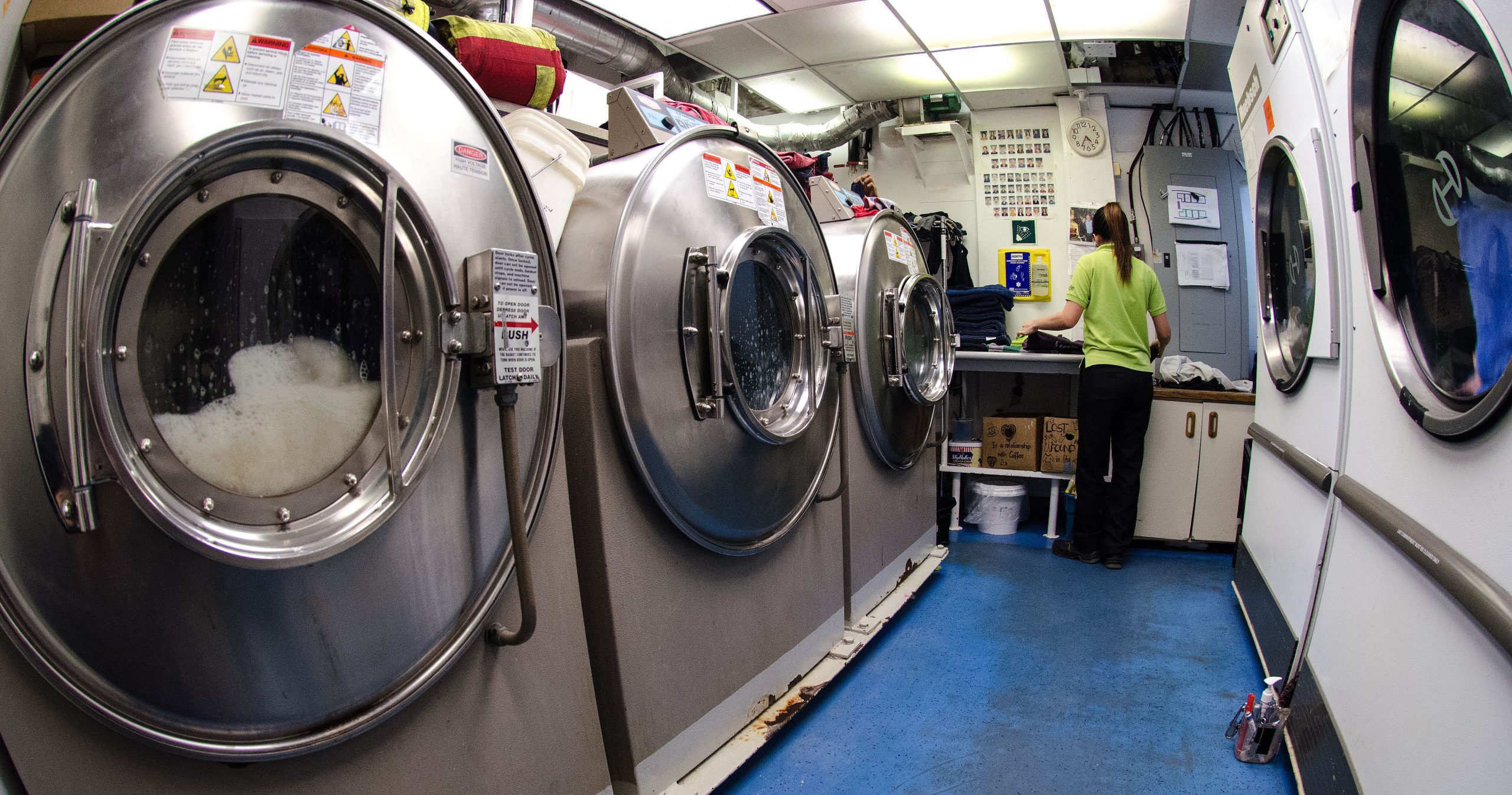
Water was essential for ship operations, cooking and cleaning – especially when it came to laundry services. All on board JOIDES Resolution had the option to put a bag of dirty clothes outside their cabin door before falling asleep, and they would then wake up to their clothes freshly laundered and folded in the same bag waiting outside the door, thanks to the Entier staff onboard. Once the dirty clothes bag were picked up in front of the cabin doors, the articles of clothing would be marked with the cabin number on the clothing tag, or smaller articles of clothing would be clumped and pinned together. Since the laundry room had three washing machines and two dryers, sometimes if one cabin did not have a large load that needed to be washed, laundry from multiple cabins would be placed in the same machine. After being washed and dried, clothing was re-organized by cabin number and returned to the owner before the 12 hours were up. The Entier staff ran the laundry room 24 hours a day, 7 days a week. With continuous laundry services for work clothing, towels, bedding, and more, the laundry machines were a big source of water usage on the ship.
At the beginning of each shift in the laundry room, the Entier staff member coming off shift would inform the oncoming shift person about:
- Missing clothes and where those clothes could be
- What kind of laundry has special instructions
- Laundry that might be coming in late during the shift
- Laundry that only came with one sock or other odd pairings
The Entire staff not only provided essential laundry and cleaning services, the staff always found a way to add a special touch to their work, as seen in the images below.
Images – Top left: a clean bag of laundry waiting outside the door to a stateroom; Top right: towel folded in the shape of a rabbit; Lower left: towel folded in the shape of a flower; Lower right: folded towel on a freshly made bed in a stateroom. (Credit: L. Guertin, IODP EXP 390, CC BY-NC 4.0)
What about the gray water from the sinks, laundry, and showers?
Graywater is waste water from all sources, except toilet waste. First, water from all sources or “sewage water” was sent to an onboard biological treatment reservoir where nature’s microbes decomposed the waste before it was discharged overboard. There were frequent reminders to personnel on board to not dump any kind of chemical in the sinks or toilets. The toilet was not a wastebasket and only took in what came out of a human being. If any of the cultures of the microbes in the biological treatment reservoir were killed, the smell of the waste would have been pretty unpleasant! In sensitive marine areas a dash of chlorine was added to sewage discharge.
Exercise: Data Exploration of Potable Water
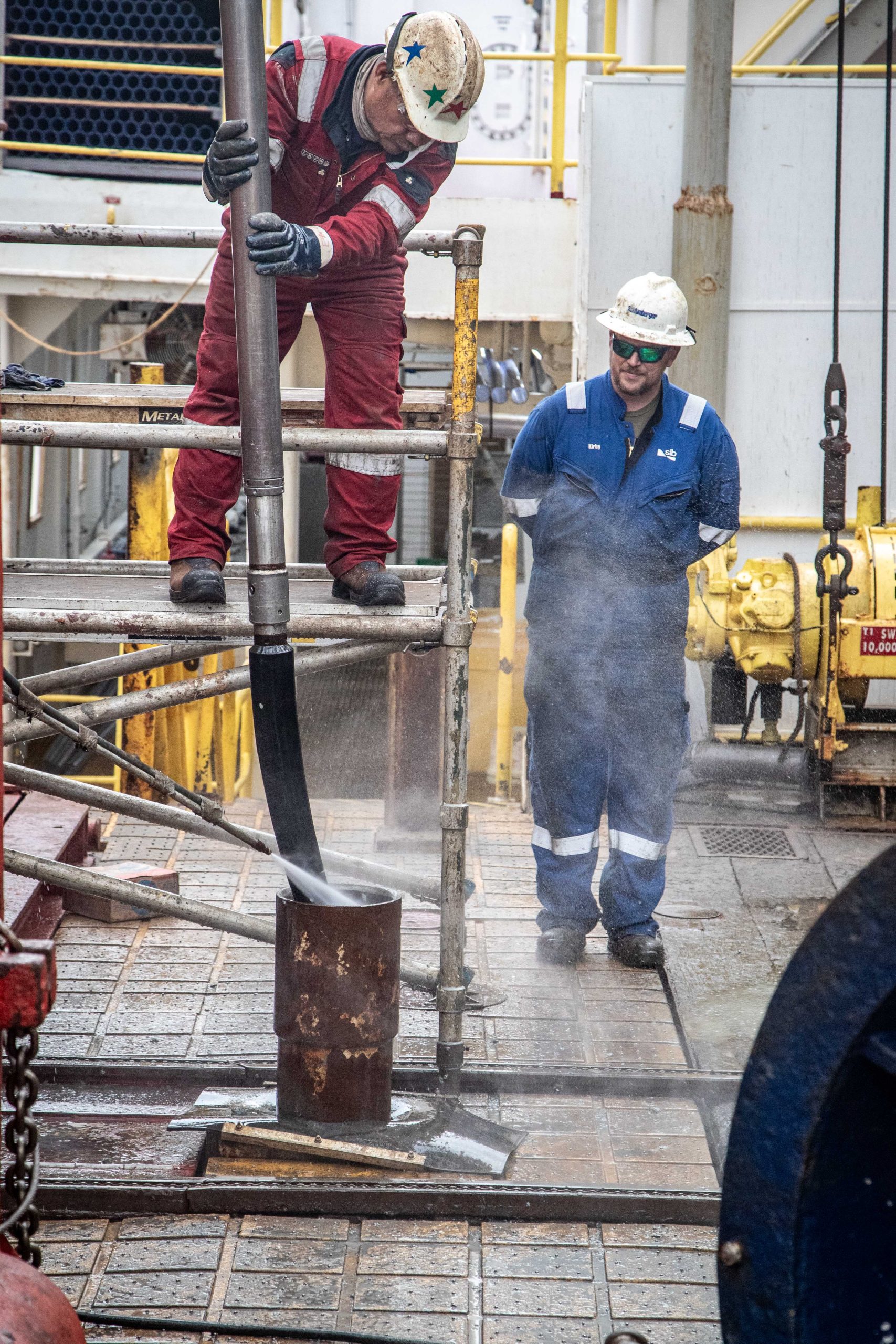
Data were recorded daily on how much potable water was made on JOIDES Resolution. The data from IODP Expedition 390 (South Atlantic Transect 1) has been pulled together and is presented in a Google Sheet for the days the JR was at sea (not in port). The Sheet can be downloaded and the data can be worked with to respond to the following questions:
a) If you were to plot this data for potable water made each day, what type of graph would you create? Which data would you put on each axis?
b) What is the range of potable water produced across the entire time at sea for IODP EXP 390 (the lowest value and the highest value on a particular date)?
c) Which day(s) had the highest value of potable water made? The lowest value?
d) What other data could you look at to better understand the variations between the daily recorded values of potable water produced? For example, would it be helpful to know the weather that day? Would any ship activities tie in to how much water would need to be produced? Etc.
e) Do you think there would be any variation in how much potable water is produced between each of the two-month JOIDES Resolution expeditions? Why/why not? How could you confirm your hypothesis?
How Many Liters of Fresh Water Were Made and Used on a Daily Basis?
Between the three water makers, JOIDES Resolution was capable of producing 158,192 liters (~ 150 metric tons or ~ 41,790 US gallons) of fresh water per day. Water storage capacity was 255,216 liters (242 metric tons, or 67,421 US gallons).
Daily potable water consumption could range from 42,185 to 52,730 liters (~50 metric tons or ~13,930 US gallons). The largest consumer was the laundry room operations.

